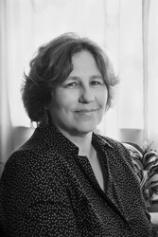Advice for Future Corpses (and Those Who Love Them): A Practical Perspective on Death and Dying
Review
Advice for Future Corpses (and Those Who Love Them): A Practical Perspective on Death and Dying
One of the reasons I wrote a play about Matisse is that he had a great death. In his final years, he created his masterpiece. He had a deep spiritual love for the nun who had been his nurse, and he knew she loved him. And he died, slowly, naturally, in his own bed.
I want that death. For me. For everyone I love. For you.
But this --- from a piece by Atul Gawande --- is how most of us are likely to die.
Spending one’s final days in an I.C.U. because of terminal illness is for most people a kind of failure. You lie on a ventilator, your every organ shutting down, your mind teetering on delirium and permanently beyond realizing that you will never leave this borrowed, fluorescent place. The end comes with no chance for you to have said goodbye or “It’s O.K.” or “I’m sorry” or “I love you.”
No wonder we find the prospect of death terrifying. And segregate the dying. And speak in euphemisms; we no longer die, we “pass.”
Sallie Tisdale will have none of that. As a Buddhist, she has trained herself to look, eyes wide open, at impermanence. As a nurse specializing in end-of-life care, she has attended the dying for decades. And as A writer, she’s known for tackling difficult subjects.
"In 240 pages, [Tisdale] tells us what we need to know. Without New Age feel-good cosmology. With no inspirational message. Just liberating facts, great stories and eye-opening practicality. It’s about dying better --- and about living better."
In ADVICE FOR FUTURE CORPSES (AND THOSE WHO LOVE THEM): A Practical Perspective on Death and Dying, she confronts the most difficult subject of all. And --- we like to think --- the most mysterious. She’ll buy half of that: “I have never died, so this entire book is a fool’s advice.” But only half: “We are future corpses pretending we don’t know.”
In 240 pages, she tells us what we need to know. Without New Age feel-good cosmology. With no inspirational message. Just liberating facts, great stories and eye-opening practicality. It’s about dying better --- and about living better.
Listen to her:
Dying is not a passive event. We can’t control it, but we do participate in it. We aren’t simply watching or waiting for something to happen to us. We are dying, and this is a verb. An act.
When I watch snow falling, I see the transformation of the world into a smooth plane where differences disappear. The snow falls in fragments so delicate that a mere breath can destroy them --- the way moments fall, the way our life passes by. It covers the earth with something strong and solid and pure. Each of us may be nothing more than a moving wave of change, but we are waves able to know that. We rise and fall in an infinitely deep and timeless sea, upright and undisturbed. This is the other side of our dangerous situation. Dying is perfectly safe. It isn’t going to hurt you.
I trust that voice. I can listen to what it has to tell me. If there’s a more universally useful book out there, I can’t think of it --- this is the ultimate nonfiction book. [To buy the book from Amazon, click here. For the Kindle edition, click here.]
The book is divided into chapters that are closely observed and deeply felt, and chapters that are a guide to what happens to the body as it dies and then right after. Example: About caring for the dying person, she advises: “Skin can become paper-thin, and it can tear like paper. Pressure is dangerous.” Good to know. But as a reader who doesn’t see himself dying soon or caring for someone who is, I’m more curious about what Tisdale has seen and felt and processed.
Like…
Consciousness is no longer grounded in the body; perception and sensation are unraveling. The entire braid of the self is coming unwound in a rush. One’s point of view must change dramatically.
Nothing is more intimately the result of your whole life than how you meet death.
Every death is different. Yet there are remarkable similarities. We’re not that different from each other. You can really predict and expect certain things with the deaths from chronic illness. Even with sudden deaths, once the moment of death is reached, it’s the same moment. It’s something you recognize if you’ve seen it before. It’s like that line in the Theravada version of the Mahapari-nirvana Sutra where Ananda says that the hair on the back of his neck stood up when the Buddha died. There’s something we recognize there that goes really deep.
Grief is the breath after the last one.
When he was himself dying, the Buddha lay on the ground in front of everyone, saying,
“Don’t look away.” Saying, “You, too, will be like this.”
And we will. Consider this book a primer. And pray the final exam is in the very distant future.
Reviewed by Jesse Kornbluth for HeadButler.com on July 27, 2018
Advice for Future Corpses (and Those Who Love Them): A Practical Perspective on Death and Dying
- Publication Date: June 12, 2018
- Genres: Memoir, Nonfiction, Self-Help
- Hardcover: 256 pages
- Publisher: Touchstone
- ISBN-10: 150118217X
- ISBN-13: 9781501182174




